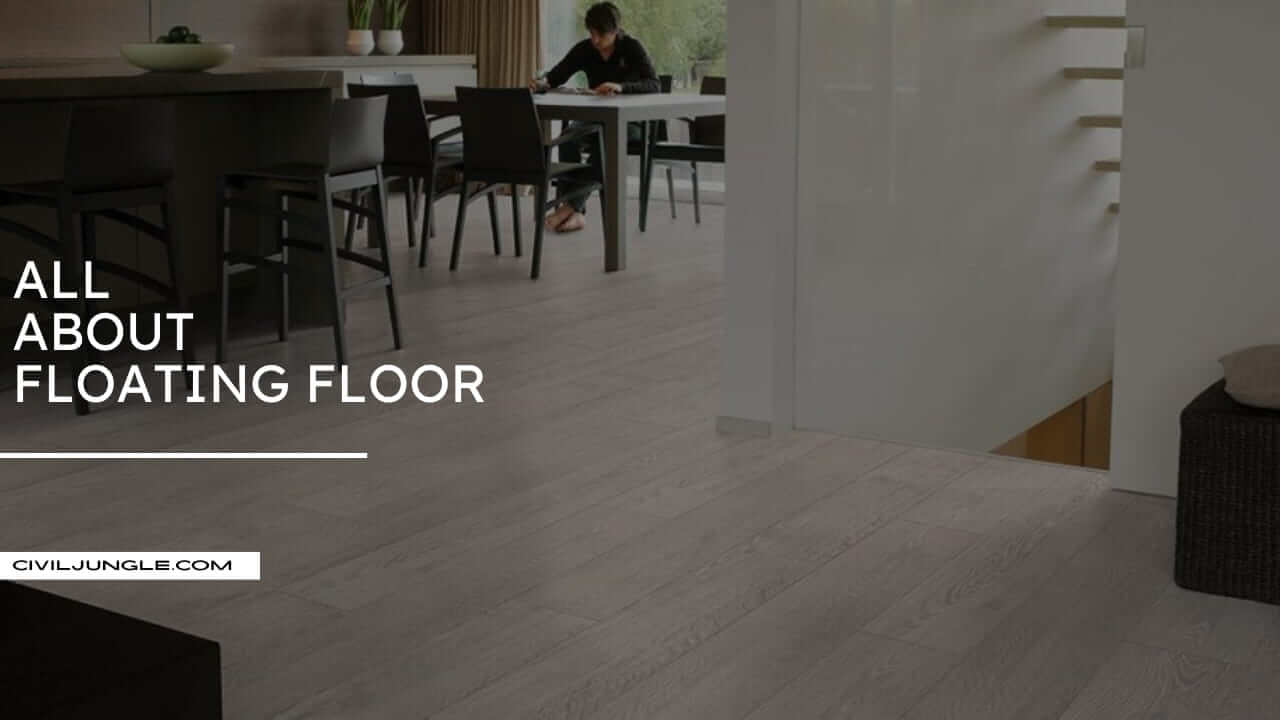
What Is a Floating Floor?
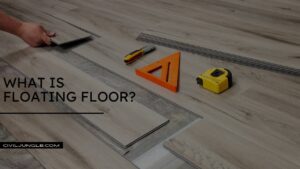
A floating floor is a special type of floor which is generally used in the interior room of any house. This type of floor is very popular in recent times and it provides a modern and classy look to the room.
A floating floor is a combination of floating materials which is attached with one piece to another like puzzle and are connected with a strong internal bond. Floating floor does not need any other bonding to subfloor because a strong internal bond is enough to resist the whole structure.
The installation process of this type of floating floor is not so much difficult and the cost of this type of floor is also very reasonable.
What Is Floating Floor Construction?
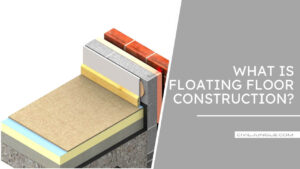
Floating floor construction is a very easy and time-saving process. Floating floor construction is basically a set of puzzles which you need to assemble in a right sequence.
Floating floor is basically some pieces of boards which is need to assemble. These materials are inter connected with some internal locks and provide a hard and tight board.
Floating Floor Problem
Floating floor is a very modern type of floor and most of the people is using this but there are also some problems in floating floor, those are in the following-
- Peaking: Peaking is a common problem of the floating floor, which hampers the natural-looking of the floating floor. In this type of problem, plank boards expand and if there is no space to expand then it bumps out and the floor is slightly lifting. If there is no expansion happens then the upper side of the board will rise.
- Warping and Buckling: Moisture is the main cause of warping and buckling in the floating floors. Do not use excess water for cleaning purposes of the floor because if you use less water to clean then the buckling and warping changes will also reduce. You need to take proper care about no liquid should be entered into the gap between two floating boards.
- Mould: This is another huge problem of floating floors where the existence of bacteria or fungi on the upper portion of floating floor. This situation is only happens when the moisture or humidity of that room is constantly rising or higher than normal room.
- Floorboard Gaps: This type of problem appears when the floorboards are pulled away from each other and creates different gaps. Generally this type of problem arises when there is a huge difference in temperature.
- Edge Chipping: This is one of the major problem and it destroys the aesthetic beauty where some gap creates and there is the chance or place to grow mold.
Also, Read: All About Marble Price | What Is Marble | Types of Marble Available in India
Types of Floating Floor
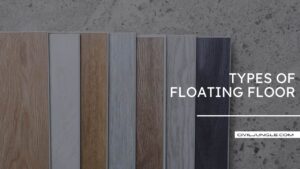
Before starting the types of floating floor, we need to discuss the main fundamentals of the floating floor.
From outside, floating floor looks like a single sheet of wooden material but it is actually not. A floating floor is a combination of three-layer material. In the upper layer, everyone can walk over it; the intermediate layer acts like a subflooring and finally, a strong structural layer is present which provides structural support to the floating floor.
To provide a firm installation, we are providing nails or glued to each other for the best result but now a days floating floors are easily joined by internal locking. If the floors are torn out then it will be easily replaced. Engineered wood, vinyl or luxury vinyl is used for the creation of floating floor.
There are naturally different types of a floating floor is categorized based on different materials, those are-
1. Engineered Wood
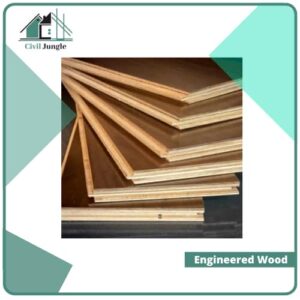
Due to it’s lightweight property the labour charges is also very less and it does not require so much skilled workers. In this, the bottom layer is made of a compressed recycled products of wood which gives a hard start. Engineered wood is available with a “click-lock” option and it is also fixed with nails or glued.
2. Laminate
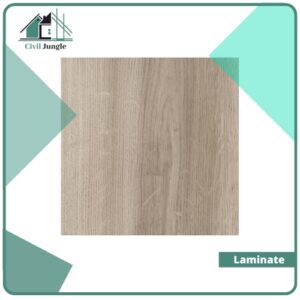
Laminate flooring is the second type of floating floor type which is very popular. Laminate floorings are interconnected with planks by tongue and groove of “click-lock” system. In this type of flooring, no nails or glue is used. Laminate flooring is very durable and long-lasting & it provides a tile-looking outlook.
3. Luxury Vinyl.
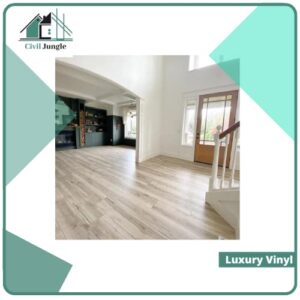
Luxury vinyl flooring is the most expensive type of floating floor. Luxury vinyl flooring is divided into two categories, those are luxury vinyl plank (LVP) and the second one is luxury vinyl tile (LVT).
Luxury vinyl plank is made of wooden material and luxury vinyl tile is made of ceramics or stones. Luxury vinyl flooring uses both techniques like tongue and groove “click-lock” system and nails or glued system.
Also, Read: All About of Laminate Vs Vinyl Flooring
Floating Floor Cost
The cost of a laminate floating floor is-
- Laminate: $0.79 to $3 per square foot
- Underlayment: $0.29 to $0.79 per square foot
- The cost of laminate flooring installation is-
- Installation: $2 to $3 per square foot
- Materials: $1 per square foot
- Underlayment: $0.3 per square foot
- The cost may vary from one place to another due to different sellers, demand of the material, and different transportation costs.
Floating Floor Installation
Floating floor installation is not very difficult job but you need to take proper care and follow the right steps. Those installation steps are in the following-
- The mentioned concrete slab, where the floating floor construction will be done, needs to be fully dry and cleaned perfectly.
- That concrete surface need to be smooth enough, flat and no projections should be allowed. Beams on the floors or any kind of blockage should be perfectly measured and take necessary action. Irregularities should not exceed 5 mm at the time of measuring 3-meter straight edge.
- At first a thin layer of cement-sand mortar is used, leveling screed is used to level the surface. If the boards tend to slip then you need to provide at least 1 day time for hardening.
- If no damp proofing membrane or damp proofing coarse is applied then you need to provide a damp proofing material for extra safety purposes. The damp-proof material should be used like 300 microns and 1200 gauge polyethylene. The joints must be strong enough to resist the groundwater pressure.
- The membranes should be placed at the height of the wall so that it acts as a DPC (Damp Proofing Course).
- At the battens, any type of softwood is used and it is generally used at the doorways. The top of the battens are being flushed by the insulation boards.
- The insulation boards act as a vapor-controlling layer. Here, a polyethylene sheet is provided and use as a slip resisting layer.
- At the time of installation, 2 mm expansion gap at 2 meter run of floor or 10 mm swell which is greater, we take into our calculation.
- Before placing the floating boards, we need to apply an adhesive PVA material on the top of the battens and the joints.
- After placing the floating boards, we need to place some wedges to maintain the tightness of the joint between the wall and the floor.
- When the wedge is removed then cork or polyethylene foam is sued as a filler material. After that skirting work should be done.
Advantages of Floating Floor
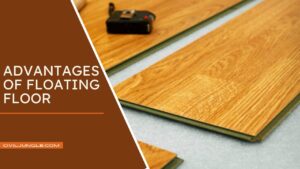
Floating floors are very much popular in modern times because there are definitely some advantages of that floor. Some advantages of floating floors are in the below.
-
Time and Cost
The main advantage of using a floating floor is it is very cheap so, everyone can afford it and it is very easy to install. Floating floor does not need any type of special worker, so, it reduces the labor charges. Here, floating floorboards can easily installed by adhesive floor system or sometimes it uses the click-lock system or grove tongue system.
-
Eco-Friendly
The second advantage of using floating floors is it’s an eco-friendly material, so, it does not harm the environment. Floating floor is eco-friendly because it uses wood material which is completely eco-friendly.
-
Comfort
Comfort is our first priority in any kind of materials. In floating floor, it provides extra comfort to user and it is the third advantage of using this material. In the time of walking over it, you will notice some flexibility. This happens due to the cushion between substrate and floating floor.
-
Reuse and Removal
Floating floor can be easily removed and reused because it is not permanently attached with the floors, so, you can pull the floating boards & it will easily be removed. We can again use this material for a different room. Those are the main advantages of using a floating floor.
Disadvantages of Floating Floor
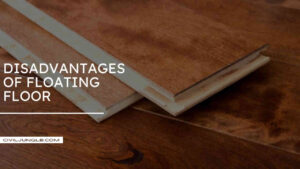
There are some disadvantages of using floating floor, those are in the following below-
-
Constant Replacement
Floating floor consists of several layers. Sometimes there is also a thin layer is present but when the daily activity is done over that portion then that portion will got damaged and need some repair or replacement. Sometimes heavy furniture movement can cause the damage of floating floor.
-
Tends to Be Squeaky
This is another disadvantage of using a floating floor where two layers of floating floor get loosened and creates a very disturbing noise. It generally happens when the nails are loosened or lack of adhesion or bad condition of interlocking.
-
High Humidity Level
High humidity level creates very much problem to the floating floor because with presence of higher humidity floating boards start buckle.
-
Refinished Only A Few Time
It can be refinished several times in comparison with installation method. The top layer of this is coated by veneer which is a thin layer. This can not be refinished in many times.
Floating Floors Problems
Since floating floors are just that floating, problems can manifest themselves in four ways: chipping; warping & buckling; peaking; and mildew & mold growth.
Floating Vinyl Plank Flooring Problems
Problems include crumbling at the edges, as the adhesive has loosened, or, as in case of LVT, problems with abatement chemicals which can react adversely with these flooring materials. If you are installing click-lock vinyl planks, uneven substrate can lead to lifting of the flooring’s edges and joints.
Floating Bamboo Flooring Problems
Bamboozle patented technology and handcrafted floorboards help avoid common bamboo flooring problems.
- Bamboo is prone to moisture, cupping and swelling.
- Bamboo can be easily dented and scratched.
Types of Floating Floors
Laminate, vinyl, and engineered floors are the three main types of floors that can be installed in floating fashion. Laminate, vinyl, and engineered floors are the main kinds you’ll see installed as floating floors, with laminate being the most common example on the market.
Disadvantages of Floating Floors
- Floating floors may need to be replaced more frequently.
- Floating floors may amplify sound.
- They can’t be refinished as many times (or at all)
- Humid environments can occasionally pose issues with floating floors.
- They can save you money.
- Floating floors are super DIY-friendly.
Floating Floor
A floating floor is a floor that does not need to be nailed or glued to the subfloor. The term floating floor refers to the installation method, but is often used synonymously with laminate flooring. It is applied now to other coverings such as floating tile systems and vinyl flooring in a domestic context
Floating Floor Installation
Floating Floor Cost
Laminate flooring: $2.70 – $10 per square foot; cost varies depending on type and finish. Luxury vinyl flooring (LVF): about $7 per square foot. Engineered hardwood: $5 to $8 per square foot (average-grade product).
Floating Floor on Concrete Problems
Since floating floors are just that – floating, problems can manifest themselves in four ways: chipping; warping & buckling; peaking; and mildew & mold growth.
Floating Floor Laminate
The term “floating floor” refers to the construction of flooring material to lock together using a system similar to a puzzle piece where the material locks together creating a tight bond. With this tight bond, the floor is stable without any attachment to the sub-floor.
Floating Vinyl Flooring
Vinyl plank flooring is a popular choice for both residential and commercial properties because it is waterproof, incredibly durable, and designed to offer the look of natural wood at a fraction of the cost.
Floating Wood Floor
The term “floating wood floor” refers to the method of installation of any wood flooring planks that have a click-system profile. Floating a wood floor means that it will not be nailed, glued or otherwise permanently fixed to a subfloor or surface.
Floating Hardwood Floor
The term “floating wood floor” refers to the method of installation of any wood flooring planks that have a click-system profile. Floating a wood floor means that it will not be nailed, glued or otherwise permanently fixed to a subfloor or surface.
Floating Vinyl Plank Flooring
Vinyl plank flooring is a popular choice for both residential and commercial properties because it is waterproof, incredibly durable, and designed to offer the look of natural wood at a fraction of the cost.
Final Step to Installing a Floating Vinyl Floor
The final touch your room needs is to install your transition that fits into the metal channel you installed earlier. Score your transition or use a jigsaw to cut it to fit within the doorway. Place the transition in the metal channel and press the transition into place.
Installing Floating Floor in Bathroom
Average Cost of Floating Floor Installation
Laminate flooring installation costs $3 to $8 per square foot including labor and materials.
| National Average Cost | $2,352 |
| Maximum Cost | $8,000 |
| Average Range | $1,411 to $3,395 |
Floating Floor Installation on Concrete
Image result for Floating Floor Installation on Concrete Laminate flooring can be installed over concrete, wood or carpet subfloor or other surfaces. Installation of good quality underlayment is highly recommended. Installing underlayment is easy but it has to be done precise to avoid any tears.
Installing Engineered Hardwood Floating
A floating engineered hardwood is installed much like a laminate and can be floated over a variety of subfloors, including concrete, wood, tile and vinyl. Before you start piecing these planks together, you must prepare your room and the subfloor.
Floating Solid Hardwood Floor
You must only float engineered hardwood flooring over an underlay. Solid wood flooring is not structurally stable enough to be floated, so it must be fixed into position.
Installing Floating Bamboo Flooring
Bamboo flooring is much more dimensionally stable than hardwood so even solid bamboo can be floated over an underlay. Sometimes you will hear the term ‘loose laying’ a floor, which is just the same as floating.
Uneven Floors Laminate Installation
Laying laminate over an uneven floor is doable, however it is strongly discouraged. While you may want to attack your project head-on and just get it over with, it is important to make sure that the subfloor is in proper condition before moving forward.
Engineered Floating Floor Installation
- Step 1: Prepare the Floor for Installation.
- Step 2: Snap a Chalkline and Nail Guideboard.
- Step 3: Lay the Starter Row.
- Step 4: Complete the First Row.
- Step 5: Install the First Plank on the Second Row.
- Step 6: Install the Remaining Floor.
- Step 7: Complete the Last Row.
Floating Hardwood Floor Installation Cost
Depending upon your selections, the total cost for hardwood floor installation, including labor and materials, can average up to $4 to $6 per square foot.
- Soft Floor Coverings
- Rate Analysis of Plaster
- Top 10 Construction Companies in UAE
- What Is Staircase | Staircase Design Calculation Example | Concrete Calculation of Staircase
- What Is Micro Concrete | How to Apply Micro Concrete | What Are the Benefits of Micro Concrete | How Is Micro Concrete Used
- How to Calculate the Volume of 1 Bag of Cement in Cubic Metre | How to Calculate Volume of One Bag Cement in Cu.Ft. | 1 Bag Cement How Much Cubic Feet

